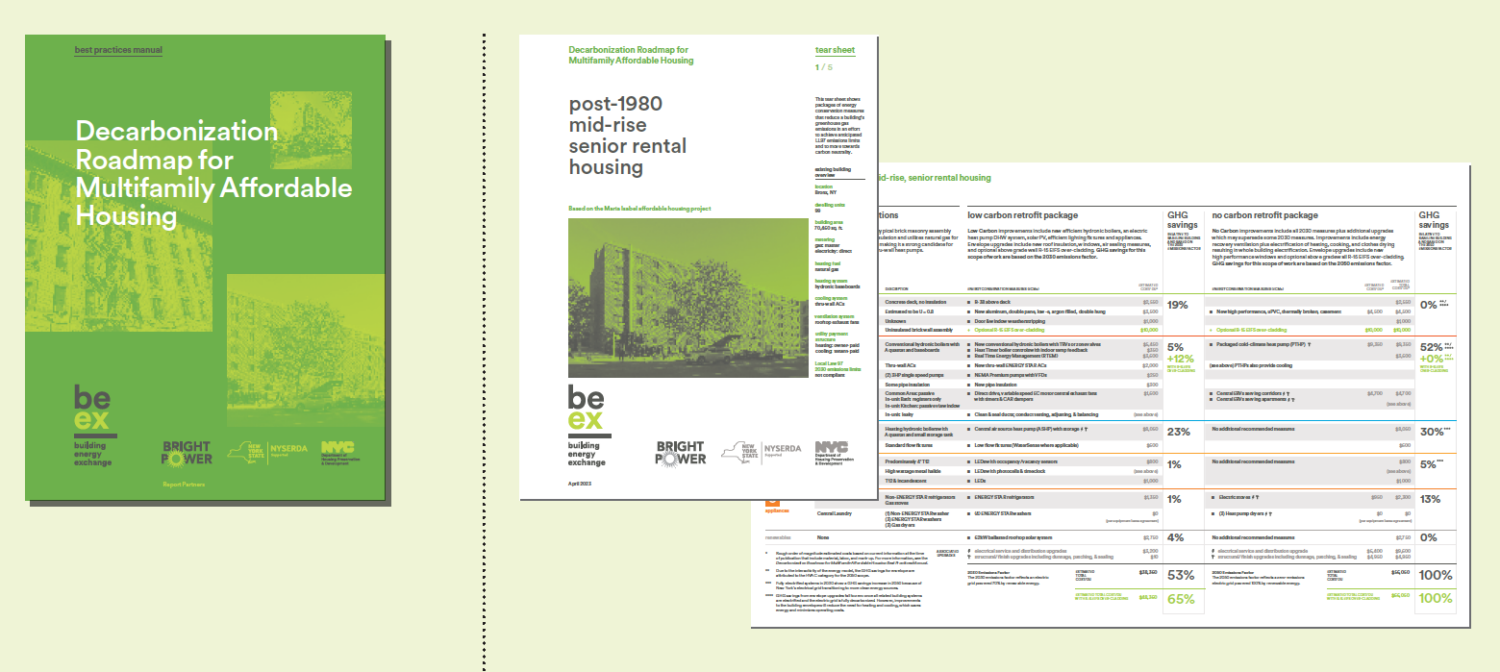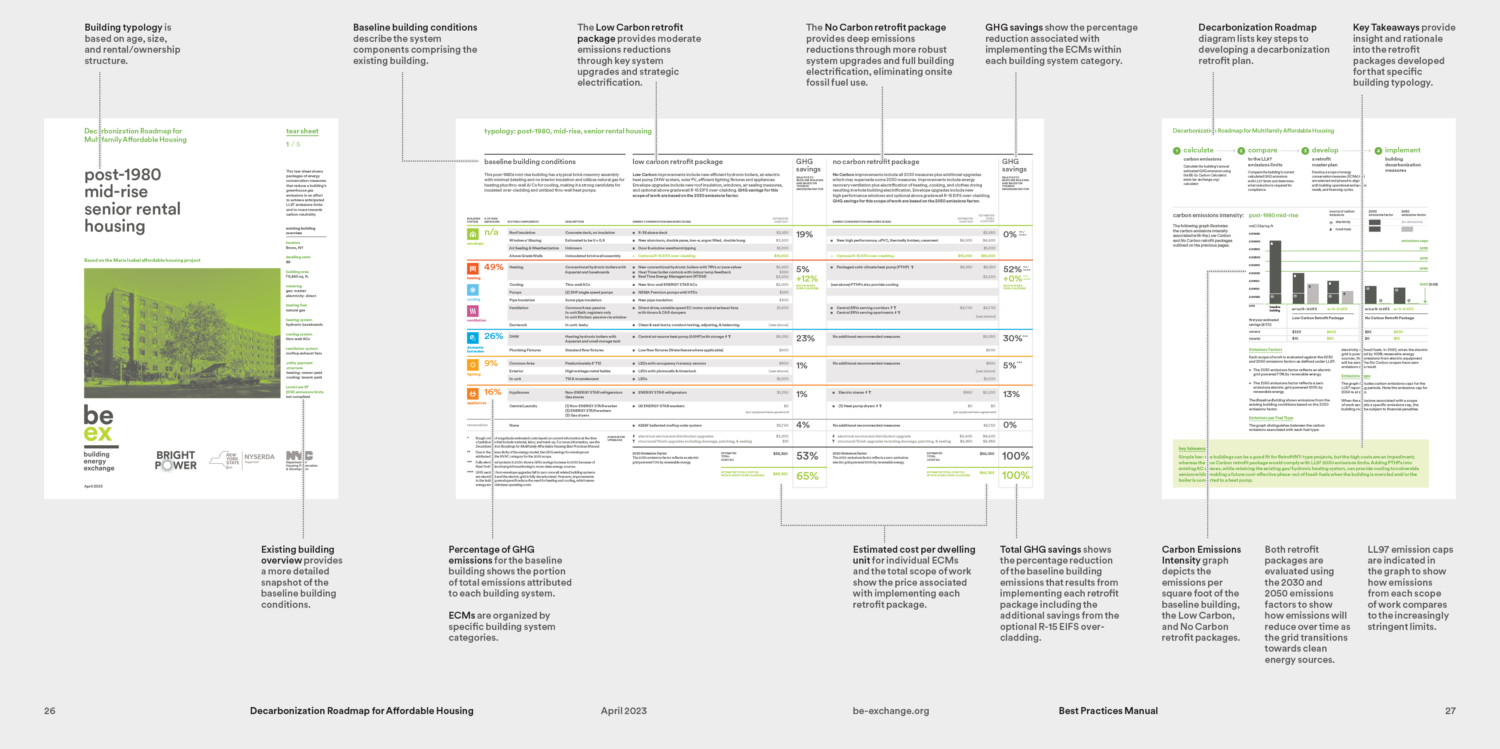This manual provides a decarbonization roadmap for affordable housing in New York City. Using this document, project teams can develop long term capital plans to meet New York City’s increasingly stringent Local Law 97 greenhouse gas emissions requirements.
Buildings with affordable and rent-regulated housing are not exempt from Local Law 97 (LL97), but are treated differently under the law. Many of these buildings are subject to the “Prescriptive Pathway” which requires buildings to implement a suite of low-cost prescriptive energy conservation measures or voluntarily meet 2030 GHG emissions limits. Other housing, primarily large income-restricted developments, are subject to the “2035 Pathway” and will need to start meeting emissions caps in 2035. With careful planning, owners of affordable housing can strategically decarbonize their buildings to meet LL97 compliance requirements while reducing energy costs, improving indoor air quality, and increasing residents’ health, safety, and comfort.
The intent of this manual and its accompanying tear sheets is to provide guidance on best practices for the entire ecosystem of affordable housing providers in NYC, to inform NYC Housing Preservation and Development’s design standards, practices, and protocols, and to guide NYC’s ongoing policy decisions around the decarbonization of affordable housing.
 at a glance: Decarbonization Roadmap for Multifamily Affordable Housing Best Practices Manual and one of five tear sheets
at a glance: Decarbonization Roadmap for Multifamily Affordable Housing Best Practices Manual and one of five tear sheets

